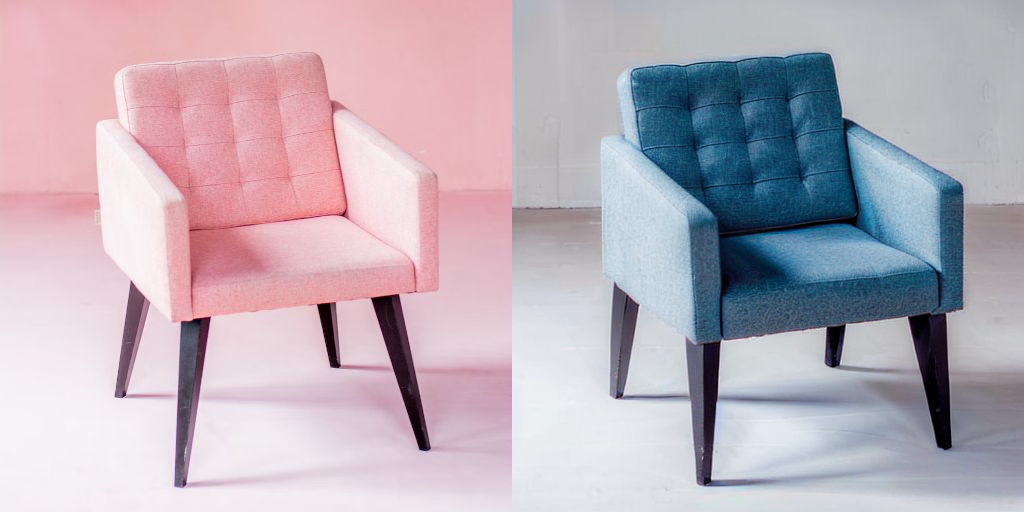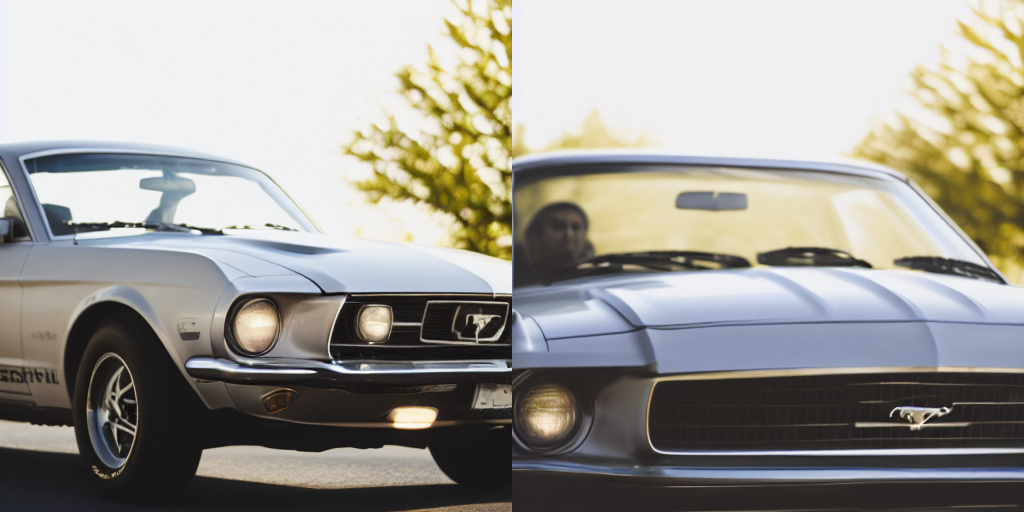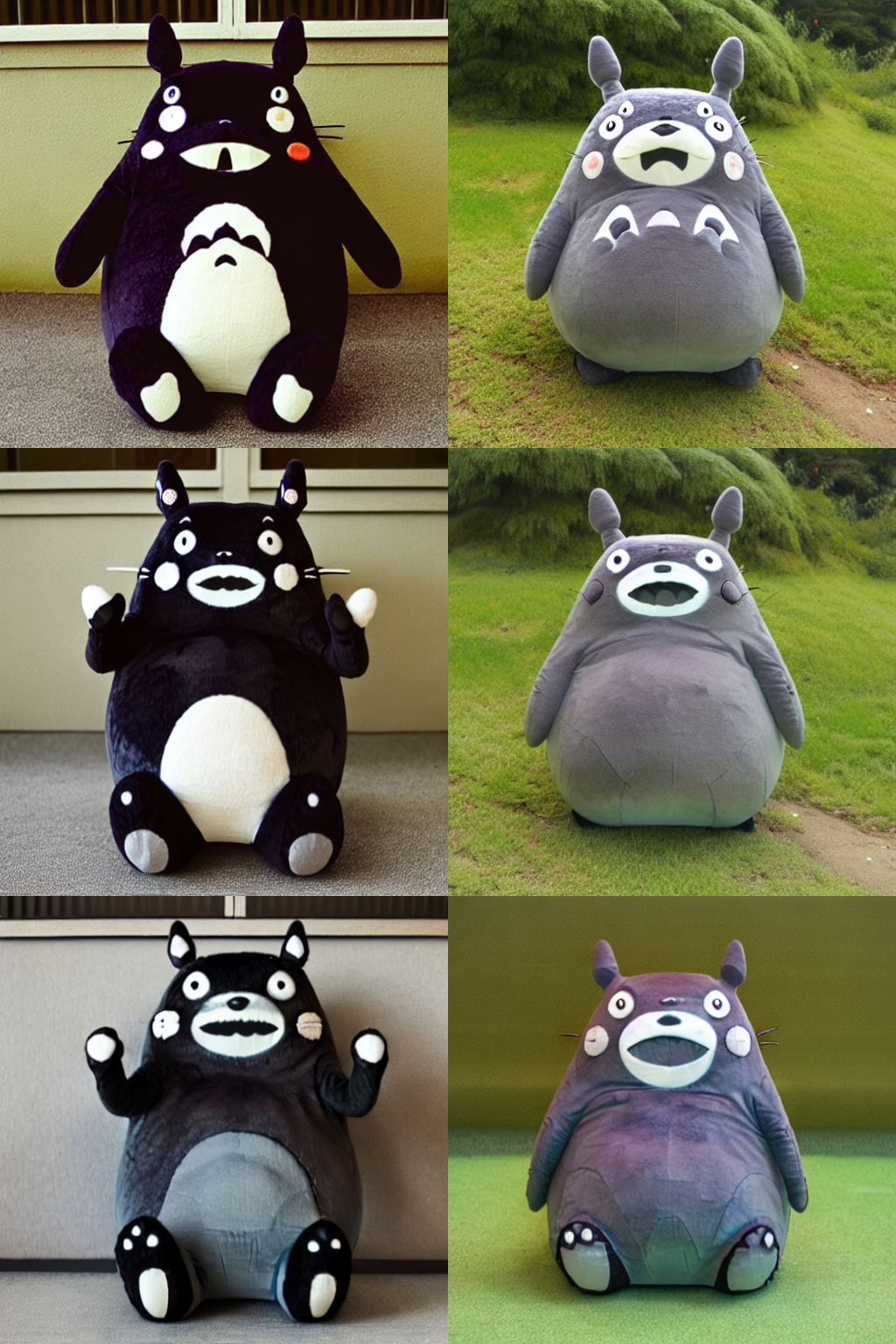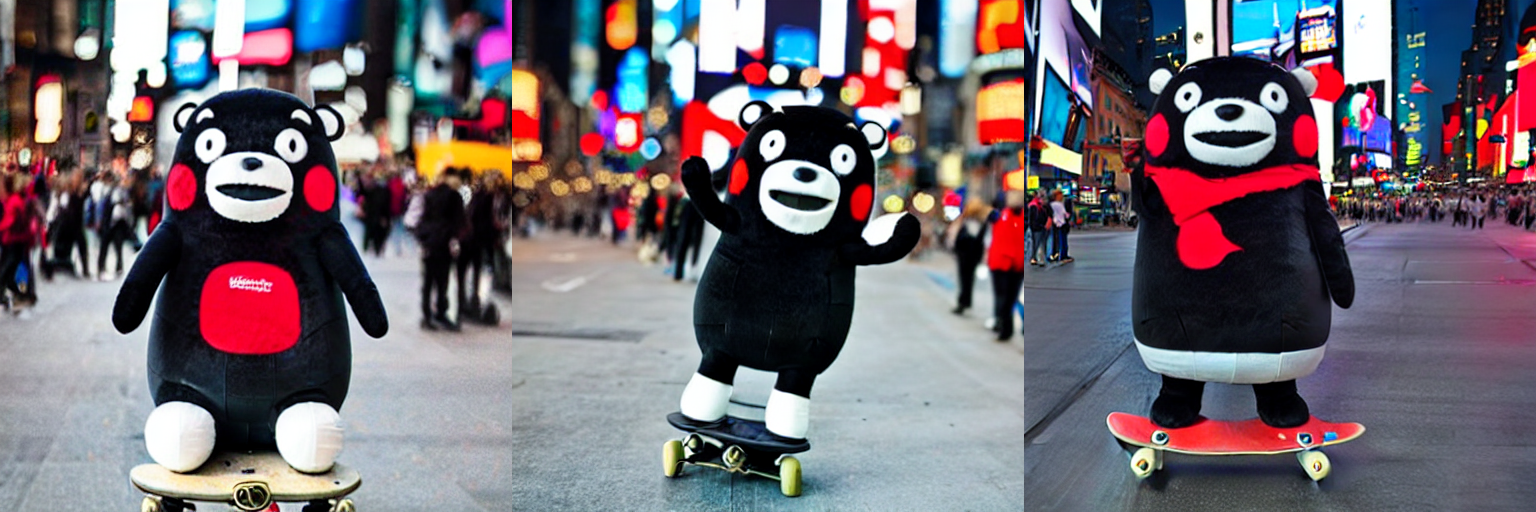An implementation of SVDiff: Compact Parameter Space for Diffusion Fine-Tuning by using d🧨ffusers.
My summary tweet is found here.
Compared with LoRA, the number of trainable parameters is 0.5 M less parameters and the file size is only 1.2MB (LoRA: 3.1MB)!!
- Released v0.2.0 (please see here for the details). By this change, you get better results with less training steps than the first release v0.1.1!!
- Add Single Image Editing

"photo of apinkblue chair with black legs" (without DDIM Inversion)
$ pip install svdiff-pytorch
Or, manually
$ git clone https://github.com/mkshing/svdiff-pytorch
$ pip install -r requirements.txt"Single-Subject Generation" is a domain-tuning on a single object or concept (using 3-5 images). (See Section 4.1)
According to the paper, the learning rate for SVDiff needs to be 1000 times larger than the lr used for fine-tuning.
export MODEL_NAME="runwayml/stable-diffusion-v1-5"
export INSTANCE_DIR="path-to-instance-images"
export CLASS_DIR="path-to-class-images"
export OUTPUT_DIR="path-to-save-model"
accelerate launch train_svdiff.py \
--pretrained_model_name_or_path=$MODEL_NAME \
--instance_data_dir=$INSTANCE_DIR \
--class_data_dir=$CLASS_DIR \
--output_dir=$OUTPUT_DIR \
--with_prior_preservation --prior_loss_weight=1.0 \
--instance_prompt="photo of a sks dog" \
--class_prompt="photo of a dog" \
--resolution=512 \
--train_batch_size=1 \
--gradient_accumulation_steps=1 \
--learning_rate=1e-3 \
--learning_rate_1d=1e-6 \
--train_text_encoder \
--lr_scheduler="constant" \
--lr_warmup_steps=0 \
--num_class_images=200 \
--max_train_steps=500from diffusers import DiffusionPipeline, DPMSolverMultistepScheduler
import torch
from svdiff_pytorch import load_unet_for_svdiff, load_text_encoder_for_svdiff
pretrained_model_name_or_path = "runwayml/stable-diffusion-v1-5"
spectral_shifts_ckpt_dir = "ckpt-dir-path"
unet = load_unet_for_svdiff(pretrained_model_name_or_path, spectral_shifts_ckpt=spectral_shifts_ckpt_dir, subfolder="unet")
text_encoder = load_text_encoder_for_svdiff(pretrained_model_name_or_path, spectral_shifts_ckpt=spectral_shifts_ckpt_dir, subfolder="text_encoder")
# load pipe
pipe = StableDiffusionPipeline.from_pretrained(
pretrained_model_name_or_path,
unet=unet,
text_encoder=text_encoder,
)
pipe.scheduler = DPMSolverMultistepScheduler.from_config(pipe.scheduler.config)
pipe.to("cuda")
image = pipe("A picture of a sks dog in a bucket", num_inference_steps=25).images[0]You can use the following CLI too! Once it's done, you will see grid.png for the result.
python inference.py \
--pretrained_model_name_or_path="runwayml/stable-diffusion-v1-5" \
--spectral_shifts_ckpt="ckpt-dir-path" \
--prompt="A picture of a sks dog in a bucket" \
--scheduler_type="dpm_solver++" \
--num_inference_steps=25 \
--num_images_per_prompt=2 In Single Image Editing, your instance prompt should be just the description of your input image without the identifier.
export MODEL_NAME="runwayml/stable-diffusion-v1-5"
export INSTANCE_DIR="dir-path-to-input-image"
export CLASS_DIR="path-to-class-images"
export OUTPUT_DIR="path-to-save-model"
accelerate launch train_svdiff.py \
--pretrained_model_name_or_path=$MODEL_NAME \
--instance_data_dir=$INSTANCE_DIR \
--class_data_dir=$CLASS_DIR \
--output_dir=$OUTPUT_DIR \
--instance_prompt="photo of a pink chair with black legs" \
--resolution=512 \
--train_batch_size=1 \
--gradient_accumulation_steps=1 \
--learning_rate=1e-3 \
--learning_rate_1d=1e-6 \
--train_text_encoder \
--lr_scheduler="constant" \
--lr_warmup_steps=0 \
--max_train_steps=500import torch
from PIL import Image
from diffusers import DDIMScheduler
from svdiff_pytorch import load_unet_for_svdiff, load_text_encoder_for_svdiff, StableDiffusionPipelineWithDDIMInversion
pretrained_model_name_or_path = "runwayml/stable-diffusion-v1-5"
spectral_shifts_ckpt_dir = "ckpt-dir-path"
image = "path-to-image"
source_prompt = "prompt-for-image"
target_prompt = "prompt-you-want-to-generate"
unet = load_unet_for_svdiff(pretrained_model_name_or_path, spectral_shifts_ckpt=spectral_shifts_ckpt_dir, subfolder="unet")
text_encoder = load_text_encoder_for_svdiff(pretrained_model_name_or_path, spectral_shifts_ckpt=spectral_shifts_ckpt_dir, subfolder="text_encoder")
# load pipe
pipe = StableDiffusionPipelineWithDDIMInversion.from_pretrained(
pretrained_model_name_or_path,
unet=unet,
text_encoder=text_encoder,
)
pipe.scheduler = DDIMScheduler.from_config(pipe.scheduler.config)
pipe.to("cuda")
# (optional) ddim inversion
# if you don't do it, inv_latents = None
image = Image.open(image).convert("RGB").resize((512, 512))
# in SVDiff, they use guidance scale=1 in ddim inversion
# They use target_prompt in DDIM inversion for better results. See below for comparison between source_prompt and target_prompt.
inv_latents = pipe.invert(target_prompt, image=image, guidance_scale=1.0).latents
# They use a small cfg scale in Single Image Editing
image = pipe(target_prompt, latents=inv_latents, guidance_scale=3, eta=0.5).images[0]DDIM inversion with target prompt (left) v.s. source prompt (right):

"photo of a grey Beetle Mustang car" (original image: https://unsplash.com/photos/YEPDV3T8Vi8)
To use slerp to add more stochasticity,
from svdiff_pytorch.utils import slerp_tensor
# prev steps omitted
inv_latents = pipe.invert(target_prompt, image=image, guidance_scale=1.0).latents
noise_latents = pipe.prepare_latents(inv_latents.shape[0], inv_latents.shape[1], 512, 512, dtype=inv_latents.dtype, device=pipe.device, generator=torch.Generator("cuda").manual_seed(0))
inv_latents = slerp_tensor(0.5, inv_latents, noise_latents)
image = pipe(target_prompt, latents=inv_latents).images[0]You can also try SVDiff-pytorch in a UI with gradio. This demo supports both training and inference!
If you want to run it locally, run the following commands step by step.
$ git clone --recursive https://github.com/mkshing/svdiff-pytorch.git
$ cd scripts/gradio
$ pip install -r requirements.txt
$ export HF_TOKEN="YOUR_HF_TOKEN_HERE"
$ python app.pyYou can adjust the strength of the weights by --spectral_shifts_scale
Here's a result for 0.8, 1.0, 1.2 (1.0 is the default).

By using ToMe for SD, the prior generation can be faster!
$ pip install tomesd
And, add --enable_tome_merging to your training arguments!
@misc{https://doi.org/10.48550/arXiv.2303.11305,
title = {SVDiff: Compact Parameter Space for Diffusion Fine-Tuning},
author = {Ligong Han and Yinxiao Li and Han Zhang and Peyman Milanfar and Dimitris Metaxas and Feng Yang},
year = {2023},
eprint = {2303.11305},
archivePrefix = {arXiv},
primaryClass = {cs.CV},
url = {https://arxiv.org/abs/2303.11305}
}@misc{hu2021lora,
title = {LoRA: Low-Rank Adaptation of Large Language Models},
author = {Hu, Edward and Shen, Yelong and Wallis, Phil and Allen-Zhu, Zeyuan and Li, Yuanzhi and Wang, Lu and Chen, Weizhu},
year = {2021},
eprint = {2106.09685},
archivePrefix = {arXiv},
primaryClass = {cs.CL}
}@article{bolya2023tomesd,
title = {Token Merging for Fast Stable Diffusion},
author = {Bolya, Daniel and Hoffman, Judy},
journal = {arXiv},
url = {https://arxiv.org/abs/2303.17604},
year = {2023}
}- Training
- Inference
- Scaling spectral shifts
- Support Single Image Editing
- Support multiple spectral shifts (Section 3.2)
- Cut-Mix-Unmix (Section 3.3)
- SVDiff + LoRA


